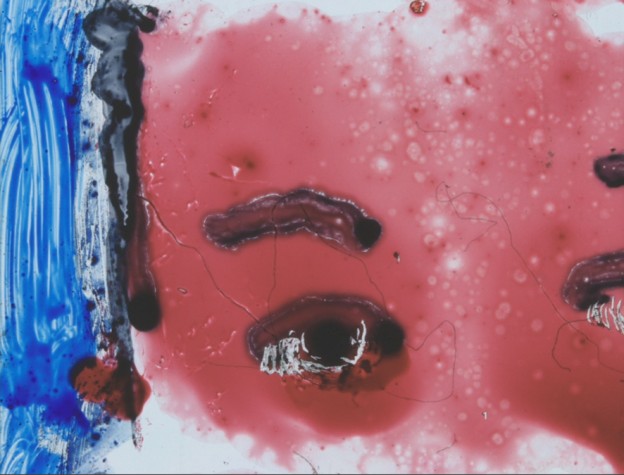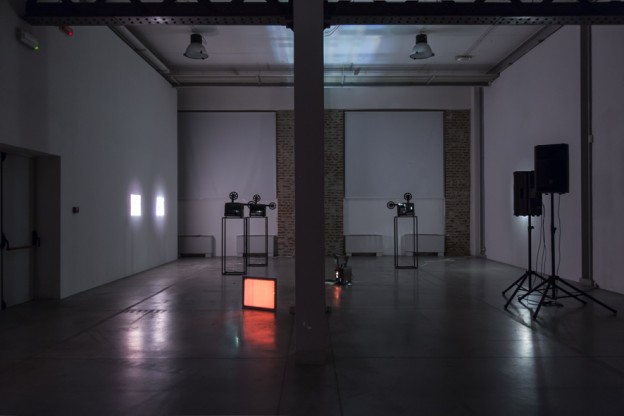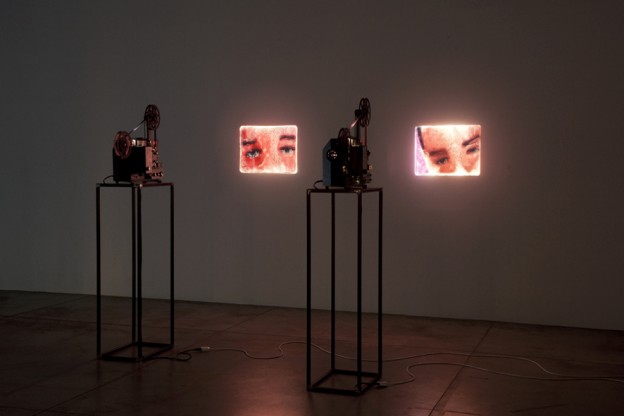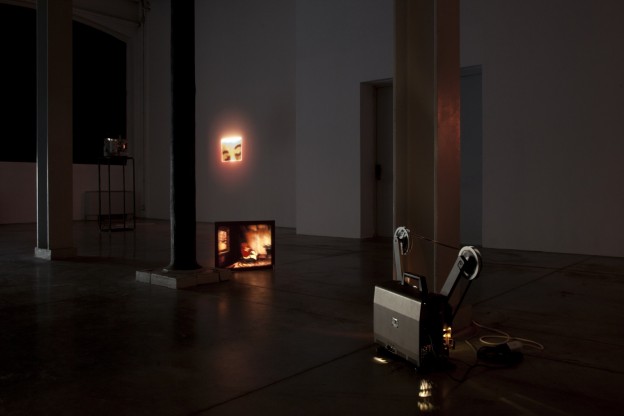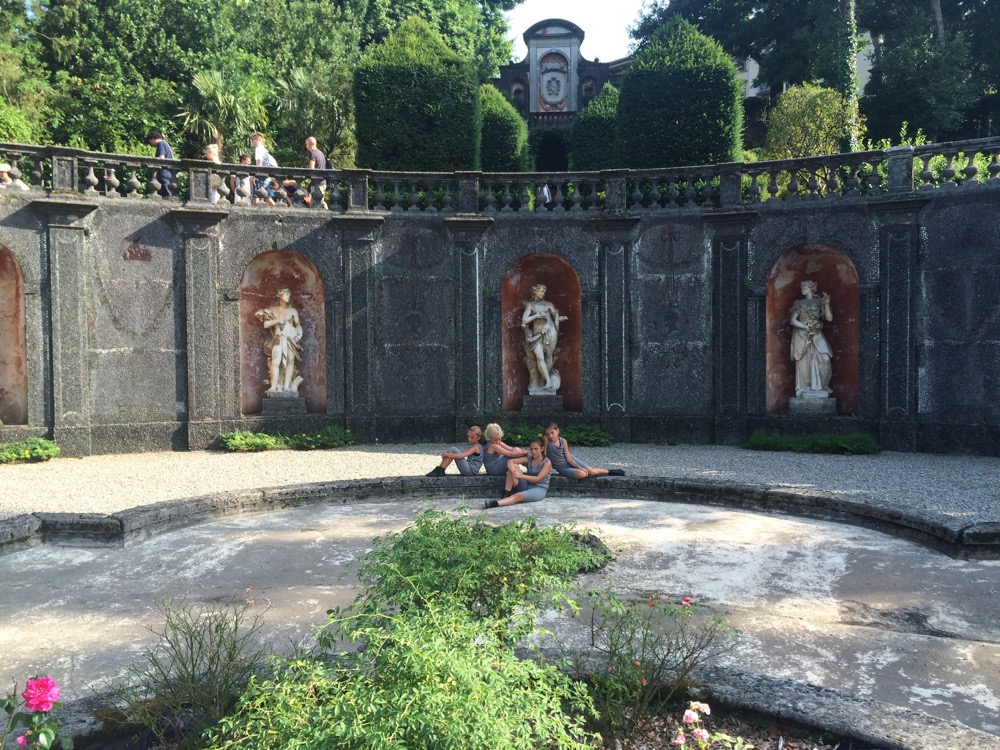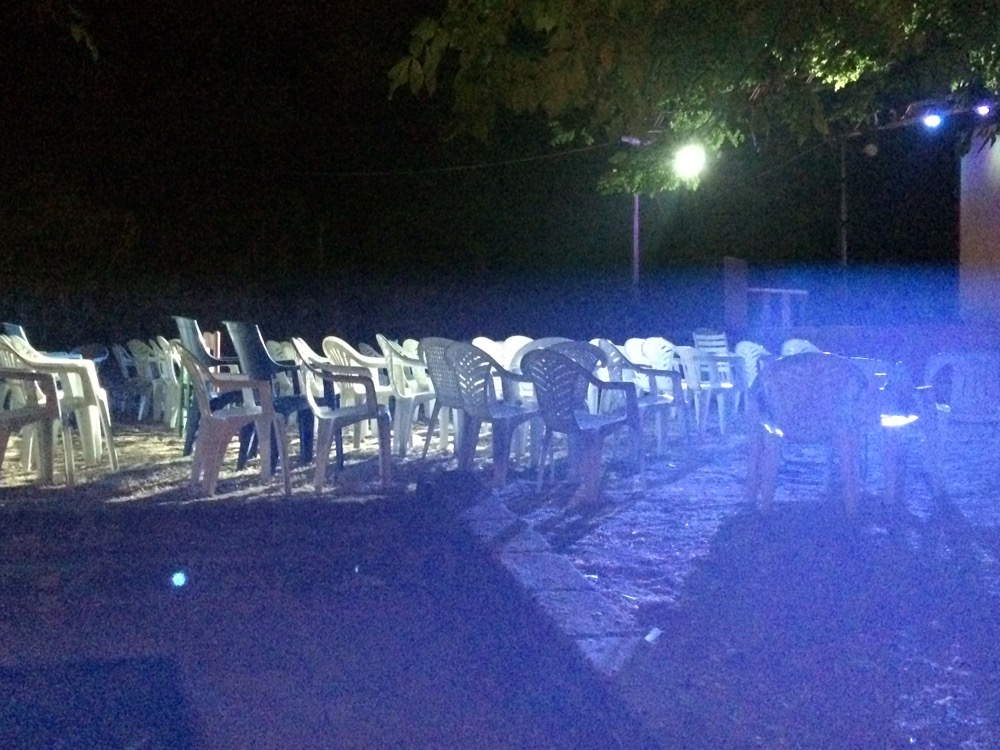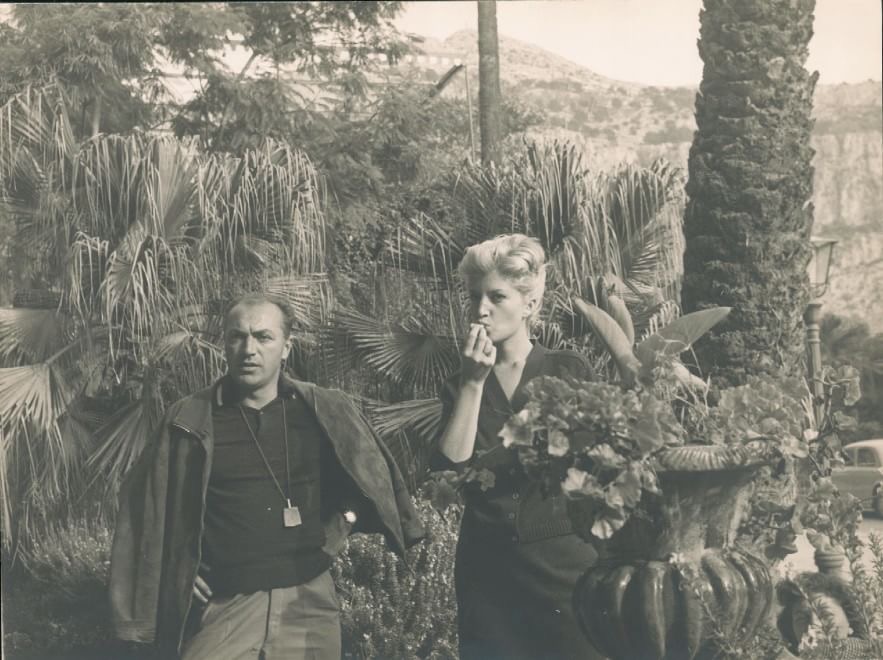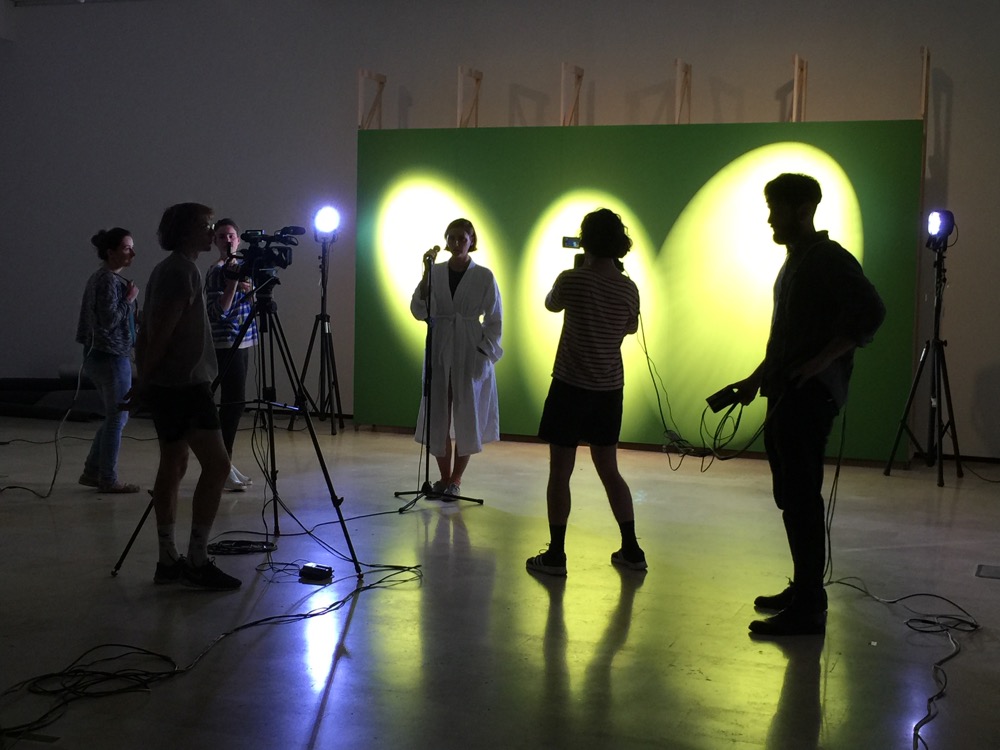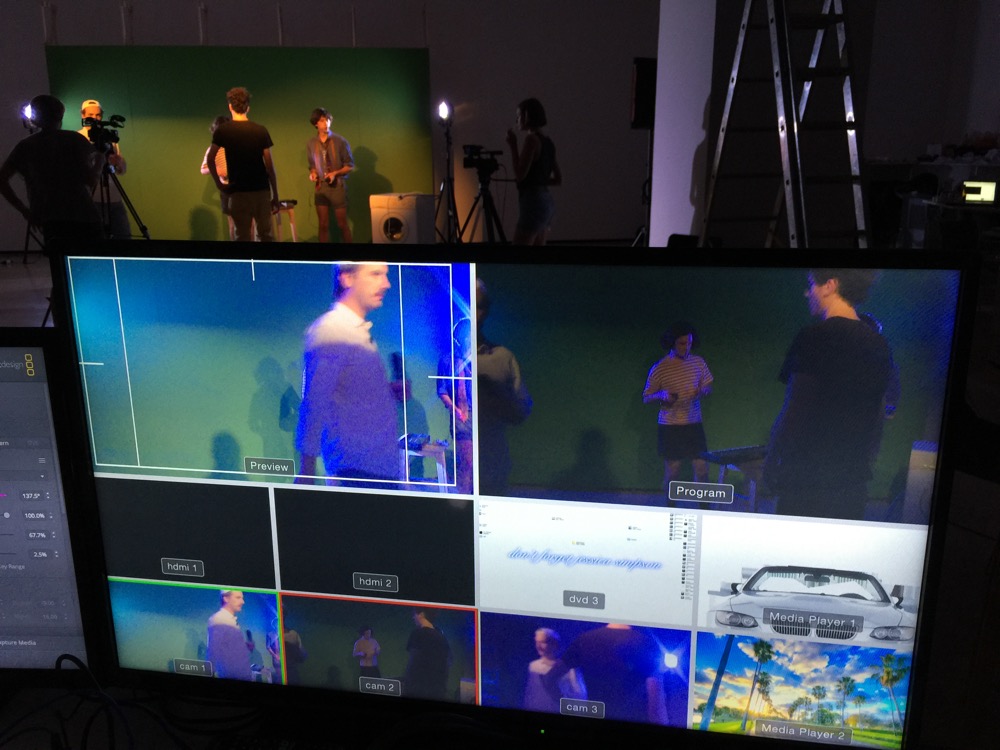Franti, out!
Careof is a not-for-profit space in Milan hosted in a public architectural complex called La Fabbrica del Vapore (The Steam Factory) which, at the beginning of the 1900s, was where trams were built. The site is next to the calm beauty of Cimitero Monumentale, a tidy layout of trees and tombs of various styles and sizes. On the opposite side is the lively Chinatown, always buzzing with people, plenty of shops and more recently trendy bars serving bubble tea.
A blasting sound can be heard outside the space’s entrance, darkened for Franti, Fuori!, Diego Marcon’s solo show. Upon entering, the eyes adjust to discover a strange statue, approximately 160 cm tall, charcoal grey. In the dark it is difficult to decipher the material it is made of. It could be concrete, but it is wooden and worn out, like it had to endure the weather outdoors for some time. It depicts a bizarre creature with human features, a prominent belly and half-closed bulging eyes, somewhere between a Disney character, Paul McCarthy’s sculpture and a big garden dwarf, yet the pose of the hands with outstretched open palms, looks like Christ the Redeemer in Rio. The statue embodies a threshold, some kind of portal to other subjective dimensions, a clownish apparition like in Stephen King’s IT.
Four films play off 16mm loops sitting on metallic stands, projected directly onto the white walls at the same close focus distance. The sound of the analogue projectors is exceeded by two big speakers playing noises seemingly repeating at short intervals. After better scanning the space, the viewer becomes aware of a small screen fixed on the ground and animated through a retro-projection, showing the dwindling cartoon image of an owl on a rocking chair.
The films are studies on the recurring subject of a falling head, bending, almost collapsing. Marcon refers to them as “direct animations” and chose four for the exhibition out of the series he had been working on for months, patiently drawing and applying by hand ink, colours and scratches directly onto the film rolls. After studying cinema techniques, Marcon has been employing both digital and analogue formats in his practice, exploring the memories or documentary potential embedded in video documents. Franti, Fuori! is a hypnotic and inspired reflection on the medium of film and constitutes a turning point in the artist’s work. It’s the result of a long research in which Marcon was trying to counteract his weariness with the omnipresence of images, exhaustion with their representation and worry about their exploitation for ideological purposes, in particular as he had witnessed in Paris in the aftermath of the Charlie Hebdo attacks and when he arrived in Milan.
The partial view of a man’s face, his abstracted eyebrows and eyes, are those of the artist. These portraits, rather than an act of vanity, are a genuine attempt to go back to the source, the closest material at hand, and function as a frank questioning of one’s intentions before moving on to add further external layers. The title of the show references an old novel that used to be compulsory reading in Italian primary schools up until 60 years ago, called Cuore (Heart). Franti, the antihero, is a complex character who is first sent out of the classroom and eventually kicked out of school. In the preface to the book the writer De Amicis addresses his audience of children with the sentence: “I hope it will make you happy and bring you some good.” Within this show it is difficult to find a moral compass: on the one hand it hints at an overturning of reality, reminiscent of the dramaturgy of horror movies and introducing hidden symbols, whilst on the other it is imbued with a candor and honesty so rare to find these days. The celluloid surface is still the place where fiction thrives and a viewer can get out of oneself, and decide to follow Diego Marcon wherever he wants to go to next.
Diego Marcon, Franti, Fuori!, Careof, Milan, Italy, 22 September – 14 November 2016.
